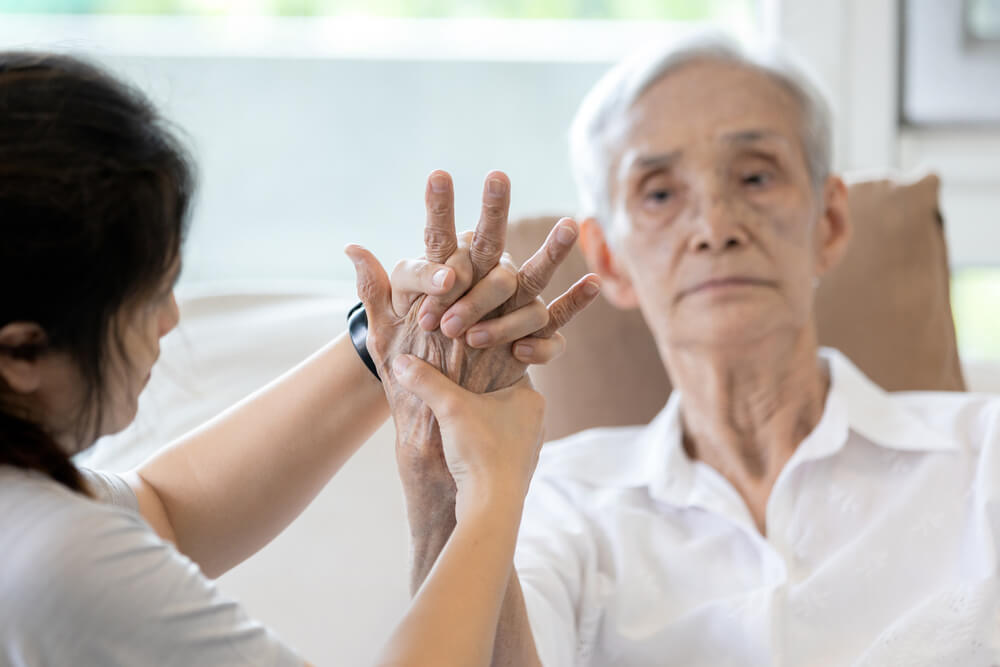Massage therapy is fast becoming recognised as a beneficial complementary treatment for osteoarthritis and its related symptoms.
This degenerative disease often worsens over time, resulting in joint stiffness, swelling and pain. Using massage, therapists can treat osteoarthritis and help the millions of Australians who have the disease.
Along with improving pain management and joint function, massage has the ability to slow the progression of osteoarthritis.
Learn about the significance of osteoarthritis and how massage therapy can benefit those with the disease below.
What is osteoarthritis?
Osteoarthritis is a very common condition, affecting around 1 in 11 Australians or approximately 2.2 million people nationwide.
Osteoarthritis is a disease that affects the whole joint, including the bone, cartilage, ligaments and muscles. While it can affect any joint in the body, it most commonly occurs in the knees, finger joints, hips and feet.
Symptoms of osteoarthritis include:
- Swelling and pain around the joint
- Bony spurs growing around the edge of the joint
- Loss of joint flexibility
- Tenderness
- Stiffness
Osteoarthritis can develop at any age but is often seen in those over 40 or in people who have had joint injuries. Diagnosis of osteoarthritis must be performed by a doctor in order to rule out any other conditions or other types of arthritis.
Difference between osteoarthritis and rheumatoid arthritis
While they share the same characteristics (joint pain, inflammation, stiffness and swelling) osteoarthritis and rheumatoid arthritis do not share the same causes or treatment options.
Osteoarthritis more commonly occurs in later life after years of joint cartilage wear and tear. Rheumatoid arthritis, on the other hand, is an autoimmune disease that can occur at any age. Unlike osteoarthritis, the speed of onset of symptoms can be rapid – appearing in just weeks or months. It can also be accompanied by other symptoms such as fatigue, fever, anaemia and loss of appetite.
Treatment will be different in patients with rheumatoid arthritis, with a focus on physical therapy and disease-modifying medications. Massage may help with short-term pain management of rheumatoid arthritis, with permission from a doctor.
Benefits of massage therapy when dealing with osteoarthritis
- Better posture Massage therapy can improve posture by realigning the joints. During a massage, muscle tension is released, allowing the body to regain better posture when standing, sitting, walking and lifting/carrying heavy objects. Relaxed muscles will reduce the weight burden load on the joint, reviving healthier posture habits.
- Joint flexibility Collagen forms in areas of injury, providing a patchwork of scar tissue which often leads to stiffness and poor joint flexibility in sufferers of osteoarthritis. Massage techniques including friction strokes can aid in the removal of this collagenous tissue within the joints, improving joint flexibility and range of movement.
- Pain management Osteoarthritis responds positively to massage therapy. Pain is relieved by the relaxation of the muscles and tendons surrounding the joint. Anyone with osteoarthritis can benefit from massage and will find relief no matter where they’re experiencing joint pain.
- Decreased swelling For osteoarthritis sufferers experiencing swelling in joints, the application of wringing strokes can help improve the affected area. Massaging swollen joints will push extracellular fluid near the limb, reducing swelling and expediting the healing process.
- Movement re-education
With regular massage, osteoarthritis sufferers will begin to experience proper joint mobility, allowing the nervous system to re-educate itself via proprioceptive activity. Improved movement patterns can be restored to pre-osteoarthritis patterns, improving the client’s quality of life.
Types of massage therapy
Massage therapy for osteoarthritis delivers a range of benefits. Pain is relieved, joints become more mobile, and posture and movement patterns are restored.
The best types of massage for osteoarthritis include:
Deep tissue massage: Using deep finger pressure, knotted or tight muscles can relax, bringing relief to the pain site and surrounding parts of the body.
Trigger point massage: Deep pressure and vibration allow the massage therapist to focus on trigger points in the myofascial tissue, helping with radiated pain.
Relaxation: Applying circular movements and longer strokes allows for the tight muscles to loosen and helps improve blood circulation. Using a kneading technique can also release tension and relieve pain.
Massage: A strong tool in treating osteoarthritis
It is clear that massage therapy can be used as an effective complementary treatment for osteoarthritis. Along with physical therapy, pain relief medication, assistive devices and self-care, massage therapy can provide effective relief and management of osteoarthritis pain. Communication between client, doctor and massage therapist prior to treatment will ensure the right massage technique and frequency for the most beneficial results.
Discover Massage Australia is here to help you grow your massage business. Find out about the range of courses and equipment we provide that can help assist clients dealing with osteoarthritis.

